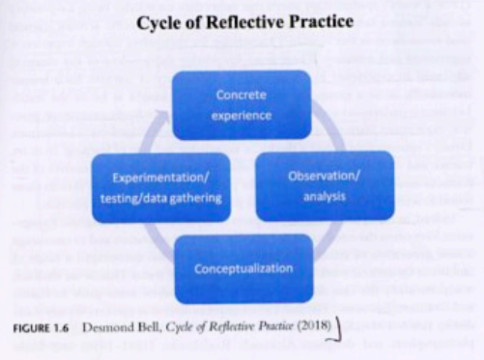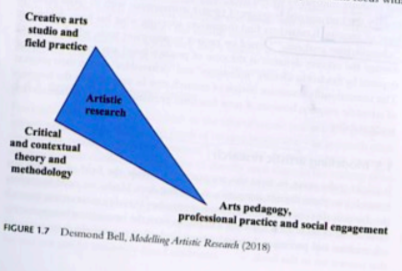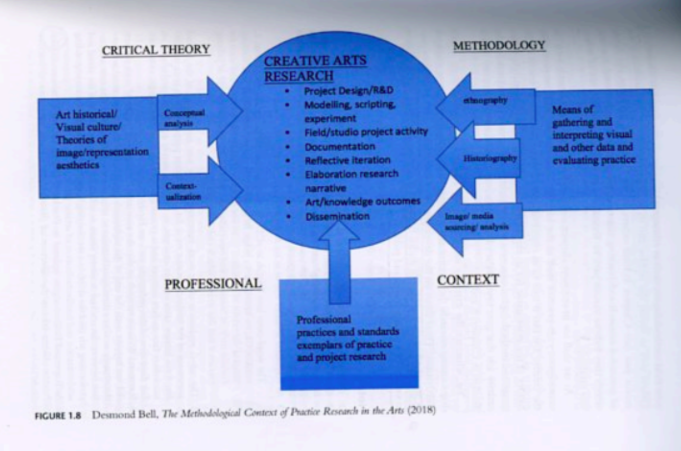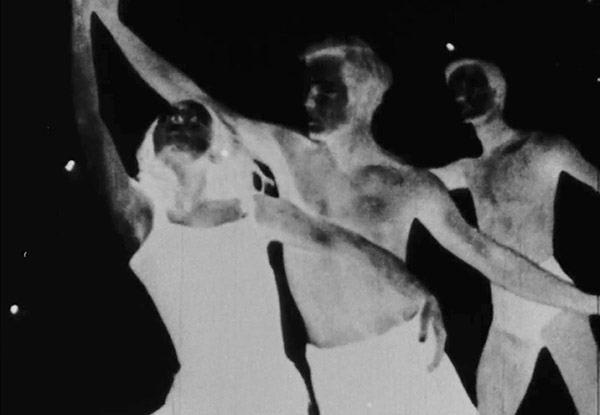Death to the real!
A workshop on documentary practice and radical thought
Amsterdam University of the Arts, Netherlands Film Academy, Master in Artistic Research In and Through Cinema, 7-9 November 2022
A workshop by Pablo Martínez-Zárate
The case against reality




Do not trust images


63. WORKER: That’s why I take one part with me every day. At home I want to put together the vacuum cleaner, but no matter what I do, it always turns into a submachine gun.
65. STUDENT: I’m a student, and right now I work at a vacuum-cleaner factory, but I think that the factory is making submachine guns for the Portuguese. But we could really use some proof.
66. STUDENT: That’s why I take one part home with me every day. At home, I want to put the gun together, but no matter what I do, it always turns into a vacuum cleaner.
68. ENGINEER: I’m an engineer and I work for an electrical corporation. The workers think we’re making vacuum cleaners. The students think we’re making submachine guns. This vacuum cleaner can become a useful weapon. This submachine gun can become a useful household gadget.
69. ENGINEER: What we manufacture depends on the workers, students and engineers.




Defying the structure of the shot – countershot


Imagine alternative correspondences to weave the imaginary fields of our research

“The visual image in what Deleuze would call the ‘modern’ cinema is not, as it is in Eisenstein, a ‘read’ image, which music orients in a specific, irreversible direction. Nor is it the image that was prevalent in th eearly sound cinema, where speech was seen as a function of the image. Rather, it is an image which incorporates a new readability of things, such that the act of speaking has become an autonomous, acoustic image. The ‘archeological’ image is, at the same time, read and seen, insofar as it breaks the sequencing of classical narration, which purports to produce itself by itself. Reading becomes a function of the eye, a ‘perception of perception’, which is perceived only through its antipode: imagination, memory, and knowledge. This reading, re-linking, and image reversal are what Deleuze calls ‘a new analytic of the image’” Christa Blumlinger
Reality runs away, reality denies reality.
Trinh Minh-ha



The real world: so real that the Real becomes the one basic referent–pure, concrete, fixed, voisible, all-too-visible. The result is the elaboration of a whole aesthetic of objectivity and the development of comprehensive technologies of truth capable of promoting what is fight and what is wrong in the world, and by extension, what is “honest” and what is “manipulative” in documentary. This involves an extensive and relentless pursuit of naturalism across all the elements of cinematic technology.
Trinh Minh-ha

The real world: so real that the Real becomes the one basic referent–pure, concrete, fixed, voisible, all-too-visible. The result is the elaboration of a whole aesthetic of objectivity and the development of comprehensive technologies of truth capable of promoting what is fight and what is wrong in the world, and by extension, what is “honest” and what is “manipulative” in documentary.



“Meaning can neither be imposed nor defined. Although every film is in itself a form of ordering and closing, each closure can defy its only closure, opening onto other closures, thereby emphasizing the interval between apertures and creating a space in which meaning fascinated by what escapes and exceedes it” TMH
“Yet such illusion (the quest for meaning) is real; it has its own reality, one in which the subject of knowledge, the subject of Vision, or the subject of meaning continues to deploy established power relations, assuming Himself to be the basic reserve of reference in the totalistic quest for the referent, the true referent that lies out there in nature, in the dark, waiting patiently to be unveiled and disciplined correctly: to be redefined. Perhaps then, an imagination that goes toward the texture of reality is one capable of playing upon the illusion in question and the power it exerts” TMH

“The documentary mode is a transnational language of practice. Its standard narratives are recognized all over the world and its forms are almost independent of national or cultural difference. Precisely because they operate so closely on material reality, they are intelligible wherever this reality is relevant (..) A transnational documentary jargon is now connecting people within global media networks. The standardized language of newsreels, with its economy of attention based on fear, the racing time of flexible production and hysteria, is as fluid and affective, as immediate and immersive as Vertov could have imagined. It creates global public spheres whose participants are linked almost in a physical sense by mutual excitement and anxiety. Thus the documentary form is now more potent than ever; it conjures up the most spectacular aspects of the language of things and amplifies their power” (Steyerl, 2008)


Media, Gaze and Memory





Radicality as method





I cannot fix my subject. It is always restless, and reels with a natural intoxication
Montaigne







Practical critique of communication


Poetics of Information

Documentary Art




Eccentric Pedagogy

Montage as an intervention of reality
One image always convoques or ocludes another image
F. Niney
Omission, the obscure, the cut, the confrontation of two improbabilities that together result in a fragment of live, the negative to immobilize what’s vital with the resources of direct denomination, the total advantage of indirect description: all that belongs to the formal world of montage, be it in cinema, music of literature
A. Kluge


In art there are two types of characters: the beast tamer and the gardener. I know that in circus tamers have more chances of succeeding; nevertheless, in my films and book, I behave like an passionate gardener. The context of a garden: that is montage. The way I conceive it, one does not turn to montage for mere thirst of prune, but because one knows that something can grow on its own
Alexander Kluge


For a good gardener, context is a network, a rhyzome; the roots of a tree transform the tree top, and in autumn the top is not that it is in spring
Alexander Kluge
I like to refer to montage as a dynamics of intensities and extensions; as a mapping of time and space in vertical, horizontal (diagonal) directions. Montage is, in a way, a dispositif of world building — a machine for creating realities.
Truth is not inscribed in the people and objects that you use. It is an appearance of truth that their images acquire when you link them in certain order. Conversely, the appearance of truth that their images take when you link them in certain order, confers those people and objects a reality
Robert Bresson
LEV KULESHOV

The artist relationship to his surrounding reality, his view of the world, is not merely expressed in the entire process of shooting, but in the montage as well, in the capacity to see and to present the world around him (…) Artist with differing world-views each perceive the reality surrounding them differently; they see events differently, show them, imagine them, and join them one to another differently. Thus, film montage, as the entire work of filmmaking, is inexctricably linked to the artist’s world-view and his ideological purpose
Lev Kuleshov

ESFIR SHUB

History as primary force in filmmaking

SERGEI EISENSTEIN

Montage of attractions — creating shocks – an aggressive moment – “an element that generates in the audience an emotional or psychological influence, verified by experience and mathematically calculated to produce specific emotional shocks in the spectators in the correct order with the whole. These shocks provide the only opportunity to perceive the ideological aspect of what is shown, the final ideological conclusion” SE
…As in Grosz’s sketches or Rodchenko’s photographs…





Film, as theater, “makes sense only as a form of pressure” SE
From this point of view a film cannot be a simple presentation or demostration of events: rather it must be a tendentious selection of, and comparison between, events, free from narrowly plot-related plans and moulding the audience in accordance with its purpose

Creating associations, supperposing in the mind of the audience

Levels of conflict:
- social mission
- nature
- methodology
Formal strategies of conflict:
- graphic directions
- scales
- volumes
- masses
- depth
- luminosity
- tempo
Complimentary conflicts:
- between theme and point of view
- theme and spatial nature
- between event and its temporal nature
- between the whole optic complex and a totally different sphere

Levels of montage:
- Metric – absolute length
- Rhythmic – real length
- Tonal – emotions of fragment
- Over-tonal – overall emotions
- Intellectual – context and juxtaposition
DZIGA VERTOV

“Kinoks understand montage as the organization of the visible world”

Moments of montage:
- In the moment of observation – disarmed eye
- Montage after observation – mental organization based on characteristic clues
- Montage during filming – orientation of armed eye – adaptation
- Montage after filming – orienting what’s filmed based on initial clues – quest for the missing fragments
- Gaze – instantaneous orientation of any visual media to capture link images
- The definite montage – manifestation of small themes in the same plane that the big ones. Reorganation of all the material in its best succession. Underlining of the film’s pivot. Regrouping of situations of the same nature and cyphered calculus of montage groupings
Three categories of observation:
- of a place
- of people and persons in movement
- of a theme, independent of people or objects
ARTAVAZD PELESHIAN

Distance montage – not about uniting, but separating
ANDREI TARKOVSKY

The sculpting in time – the passing of time in the shot – freedom as sacrifice
MAYA DEREN

Amateur versus professional
Creative cutting
If the function of the camera can be spoken of as the seeing, registering eye, then the function of cutting can be said to be that of the thinking, understanding mind. By this I am saying that the meaning, the emotional value of individual impressions, the connection between individually observed facts, is, in the making of the film, the creative responsibility of cutting
Maya Deren

In cutting, then, dureation serves not only to show or identify something, but it is also a statement of value, of importance. In determining the length of duration, the relative importance of each shot must be carefully weighed (…) Timing, in the sense of duration, can actually become an even more active element when it creates tension. Here, it is a matter of the relationship between the duration of the object or action with in the shot and the duration of the shot itself.
Maya Deren

Since the people are all different, and since it is not a cumulative action — in the sense of adding up to any narrative story — the only thing which crosses the splice and makes one shot seem to come from the previous one is the movement which is never brought to a stop but is always continued by the following shot. If cutting into movement can be the principle of tension and continuity for one hundred and fifty feet of film which does not have a story direction, then surely it can do wonders for the solution of simpler sequences in which interest is also maintained by character action, story plot and known characters
Maya Deren

Montage as a political act

“All cinema, being a vehicle of ideas and cultural models, and an instrument of communication and social projection, is in the first place an ideological event and, consequently, a political one” O. Getino y F. Solanas

“We need to consider the reality we are working with (…) In a turbulent reality such as ours, such as the one experienced in the Third World, artists need to perform violence on themselves, be taken constantly towards a creative tension with their profession” S.A.

HACER CINE MILITANTE / PERSPECTIVA DE GETINO Y SOLANAS
Octavio Getino y Fernando Solanas esbozaron, en su ensayo “El cine como hecho político”, los “dos grandes momentos” para la elaboración de un Cine Militante. Aquí retomo sus líneas para anticipar la entrada al tema de las siguientes semanas (“Gestión de la realización documental”), puesto que considero sus apuntes como una guía muy valiosa para organizar una producción documental, sea ésta expresamente militante o no. Principalmente, la ETAPA I aporta elementos significativos.
I. ELABORACIÓN-REALIZACIÓN
II. DIFUSIÓN-INSTRUMENTACIÓN
1. Elaboración
– La etapa “menos específica”, un “estudio profundo de los objetivos políticos”, “el por qué y el para qué del hecho concreto que es el filme”
a) ¿Cuál es el objetivo político del trabajo?
b) ¿Por qué hacer un filme y no otra cosa?
c) ¿Cuál es el objetivo temático del filme? Definir el tema que “debe cubrir mejor que en ningún otro tema los objetivos políticos que se buscan” “la justa elección de un tema en función de un objetivo político, depende esencialmente del análisis de conjunto de la situación y de las respuestas que vayan dándose —aun como hipótesis— a los interrogantes básicos planteados como puntos de partida para un trabajo cinematográfico militante”
d) ¿A quién nos dirigimos en cada filme particular? “destinatario histórico”, “destinatarios inmediatos y específicos”, “Lo que importa es precisar el destinatario concreto o principal sobre el cual se actuará en mayor mediad. Cada uno de los destinatarios principales determina a su ve ciertas características de un filme, tanto temáticas como formales”
e) “¿Qué posibilidades materiales y políticas tenemos para difundir el filme militante? ¿Qué canales no están vedados por la represión? ¿Qué recursos materiales y humanos tenemos para utilizarlo y difundirlo? En base a estos problemas, ¿tendrá el filme una difusión rápida o lenta? ¿Los canales serán públicos, privados, clandestinos?”, “Hay filmes que se agotan en contadas semanas como hay otros que pueden mantener una vigencia de años”
f) ¿Cuál es la técnica apropiada para cada filme?
g) ¿Cuál es la expresión y el lenguaje para lograr el objetivo buscado?
a) Expresión, lenguaje y forma: “capacidad de penetración de las ideas elaboradas”, “niveles de eficacia”, cumplimiento de objetivos, “Cada película requiere de una gran dosis de invención: una forma, una clave realizativa, en fin, la elección de un lenguaje y no otro (…) Lo que habla es cada imagen, cada sonido y el ordenamiento que se les da. Un filme militante está logrado cuando su expresión ayuda a reflexionar, concientizar, agitar o movilizar en torno del tema y de los objetivos prefijados, cuando los ha enriquecido desde el nivel más racional hasta el más íntimo y sensible.”, “Un lenguaje no se revoluciona desde el lenguaje mismo, sino desde su instrumentalización para el cambio y la liberación de nuestros pueblos”, “Concibe al cine en función del hombre y no al hombre en función del cine”
b) Los géneros: cine ensayo (o de reflexión), cine información (o de denuncia), cine panfleto (o de agitación), cine documental, cine inconcluso.
2. Realización
3. Ejecución del filme: “Si las etapas de elaboración y planificación son procesos realizados horizontalmente, la realización en cambio requiere un método que conjugue lo horizontal con lo vertical, lo colectivo con lo individual, como lo exige todo hecho operativo en el cual debe trabajarse rápido, en profundidad y sin vacilaciones”
ETAPA II
1. El proyector como arma política
2. Práctica de difusión: a) seguridad, b) participación durante actos
CRITICAL MEDIA ARCHAEOLOGY AND FORENSIC IMAGINATION
THE ARCHIVE AS A CRITICAL EVENT
The archive as an event
Derrida: the archive as tension between order and disorder.
Arkhé – place of beginning – normative
Triangle: archon-law-place
Witness-truth as temporal paradigm / privilege
Imprints —-documents
Process of inscription / materiality and technique /
Archaeology – Foucault – historical apriori / given sentences / events and things
Systems of relationships that configure the archive, its possibilites and impossibilities
Tension between preservation and erasure
Memory between Ministry and Mistery
Constituent and Instituent Violence
Potential history and site of events
Missing images
Incompatibility with the past
Imagination, intervention, transmission
Archive and the horizons of the world
— our production is in itself an Archive…
Strategies for creating with the archive:
reacataloguing
juxtaposing documentary times
repetition
recapture
intervention at different levels
cutting / multiplication / unfolding of the document
intertextuality
transference between mediums
processing — analogue or digital — (speed, textures)
tinting
erasure
modifying the conditions of the medium
decomposing / alterations of medium
error
relocalization
Types of documents and operative dimensions:
– Documentary horizon (our own or alien) – localization – rules of access and use / possibilities of appropriation, intervention and dissemination (including rights and materialities)
– According to the medium : materialities, temporalities (technical and discoursive level)
– Conditions: material o political.
– Codes / Languages.
THE CAMERA-BODY AND THE BODY-CAMERA

- Works by Pablo MZ that deal with the previous methodologies: